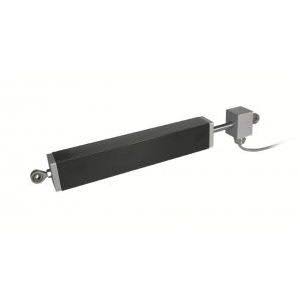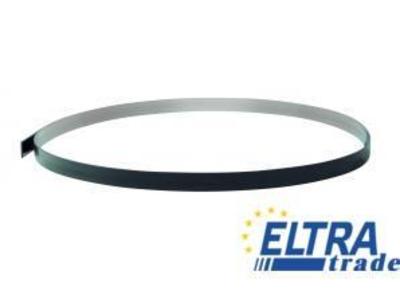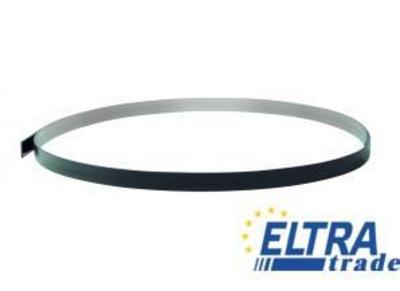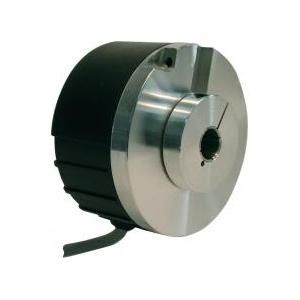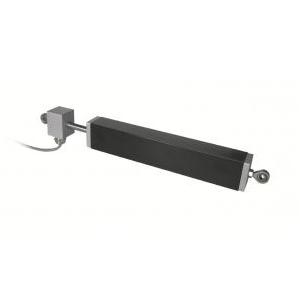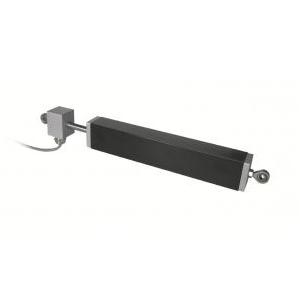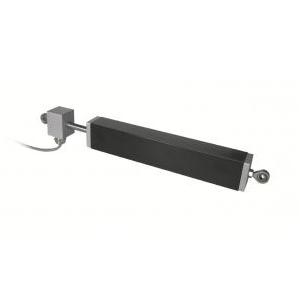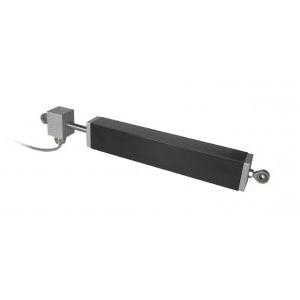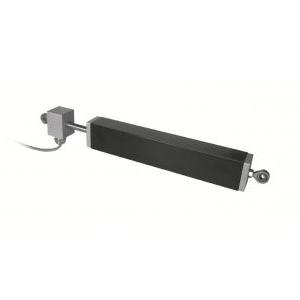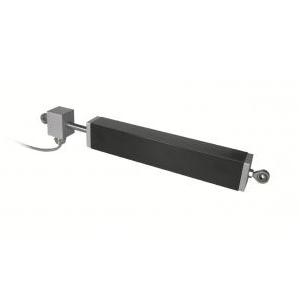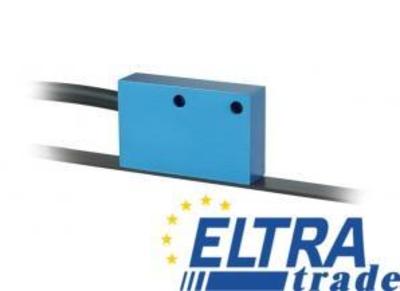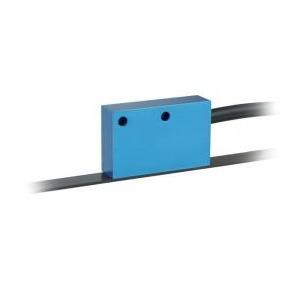Eltra Encoder Incremental linear encoder
IN STOCK!
Standard magnetic tape
Standard magnetic tape
Standard magnetic tape
Optical Hollow Shaft Incremental Encoder
Incremental Linear Encoder
Linear encoder
Linear incremental encoders
Incremental linear encoder with resolution 0,2 mm and working stroke 200 mm.
Linear encoder
Incremental linear encoder with resolution 0,2 mm and working stroke 350 mm.
Linear incremental encoders
IN STOCK!
Incremental linear encoder. Resolution 0,5 mm and working stroke 250 mm.
Incremental Linear Encoder
Magnetic incremental encoder
Magnetic incremental encoder
Magnetic Incremental Linear Sensor
Magnetic Incremental Linear Sensor
Magnetic incremental encoder
Magnetic Incremental Linear Sensor
Magnetic Incremental Linear Sensor
Incremental Linear Encoders
Incremental linear encoders are devices designed for incremental measurement or position changes along a straight path. They are widely used in various industrial applications where accurate and real-time feedback on linear movement is crucial. Below we will learn more about incremental linear encoder technology.
How Incremental Linear Encoders Work
Linear incremental encoder solutions are devices used to measure linear displacement or position changes along a straight path. Here's how incremental linear encoders typically work.
Light source and photodetectors (optical) or magnets and sensors (magnetic)
Incremental linear encoders use optical or magnetic technology to determine position. In optical encoders, a light source such as an LED emits light that passes through or reflects off a patterned scale. Photodetectors take light and convert it into electrical signals. Magnets built into the scale generate magnetic fields detected by Hall or magnetoresistive sensors in magnetic encoders.
Patterned scale or magnetic stripe
The measured linear motion occurs along a scale or strip that contains a series of equally spaced alternating transparent and opaque marks (for optical encoders) or magnetic poles (for magnetic encoders). These markers or pillars represent location information.
Light modulation or magnetic field changes
As the scale or bar moves relative to the encoder's sensitive components (light source and photodetectors for optical encoders or magnets and sensors for magnetic encoders), the light intensity or magnetic field strength changes depending on the presence or absence of marks or poles. The encoder sensors detect this modulation or change.
Generation of electrical impulses
Changes in light intensity or magnetic field strength are converted into electrical impulses. In optical encoders, photodetectors generate electrical pulses when they receive light through transparent tags and do not transmit light through opaque tags. In magnetic encoders, sensors detect changes in the magnetic field and generate corresponding electrical impulses.
Quadrature encoding
Linear displacement sensor solutions use quadrature encoding, which involves generating two sets of electrical pulses (channels A and B) that are 90 degrees out of phase with each other. This quadrature output signal allows the encoder to determine the direction and magnitude of linear movement.
Signal processing and counting
Electronic circuits inside the encoder process electrical impulses from the encoder sensors. The circuit counts the pulses and interprets changes in the pulse sequence to determine the linear offset or scale movement, relative to the encoder reference point.
Output interface
The encoder typically provides output signals corresponding to channels A and B and possibly an index or reference signal. These signals are then transmitted to a control system or data acquisition device for further processing and interpretation.
Resolution and accuracy
The resolution of the encoder, determined by the number of marks or poles per unit scale length, determines the accuracy of the linear measurement. Higher resolution encoders provide more precise position control and accuracy.
Types and Variants of Incremental Linear Encoders
Incremental linear encoders come in various types, each with its design and technology for detecting linear motion and generating position feedback. Here are some common encoder incremental linear types.
Optical incremental linear encoders
These encoders use light to detect linear motion. They typically consist of a scale with alternating opaque and transparent marks and optical sensors (photodetectors) that detect changes in light intensity as the scale moves. Optical encoders provide high resolution and accuracy, making them suitable for precise positioning.
Magnetic incremental linear encoders
They use magnetic fields to detect linear motion. They typically contain a scale with magnetic elements and magnetic sensors (such as Hall or magnetoresistive sensors) that detect changes in the magnetic field as the scale moves. Magnetic encoders are known for their reliability and resistance to environmental factors such as dust, oil, and vibration.
Inductive incremental linear encoders
Such equipment uses electromagnetic induction to detect linear motion. They consist of scales with conductive elements and inductive sensors that detect changes in electrical conductivity as the scale moves. Inductive encoders are suitable for harsh environments and provide high reliability.
Capacitive incremental linear encoders
Capacitive encoders use changes in capacitance to detect linear motion. They typically consist of scales with capacitive elements and capacitive sensors that detect changes in capacitance as the scale moves. Capacitive encoders provide high resolution and are immune to electromagnetic interference.
Interference incremental linear encoders
Such encoders use interference patterns generated by light to detect linear motion. They consist of a fine grating scale and an optical sensor that measures changes in the interference pattern as the scale moves. Interference encoders provide incredibly high resolution and are used in precision metrology applications.
Eddy's current incremental linear encoders
These encoders use eddy currents induced by a moving conductive target to detect linear motion. They typically consist of a scale with a conductive target and eddy current sensors that detect changes in the flow of eddy currents as the target moves. Eddy current encoders are highly accurate and used in high-speed and high-precision applications.
Selecting the Right Incremental Linear Encoder
Selecting the right linear position encoder involves careful consideration of various factors to ensure compatibility with the specific requirements of your application.
- Choose the type of incremental linear encoder that best suits your application. Consider environmental conditions, required resolution, and the desired balance between accuracy and cost.
- Determine the required resolution based on the precision needed for your application. Higher resolution encoders provide finer position control.
- Evaluate the accuracy and repeatability of the encoder, especially if your application demands high precision.
- Consider the operating environment of your application. Different encoders have varying resistance levels to factors such as temperature extremes, humidity, dust, and contaminants.
- Verify the mechanical compatibility of the encoder with your system. Consider factors such as the size, mounting options, and the available space for installation.
- Assess the dynamic response and speed capabilities of the encoder. Some applications require high-speed operation, and the encoder should be capable of keeping up with the movement without sacrificing accuracy.
- Check the power supply requirements of the encoder. Ensure compatibility with your existing power system and consider any specific power considerations for your application.
- Consider your budget constraints. While meeting technical requirements is crucial, find an encoder solution that fits within your budget without compromising essential features.
- Evaluate how easy it is to install and maintain the encoder. Look for features that simplify installation and reduce downtime for maintenance tasks.
